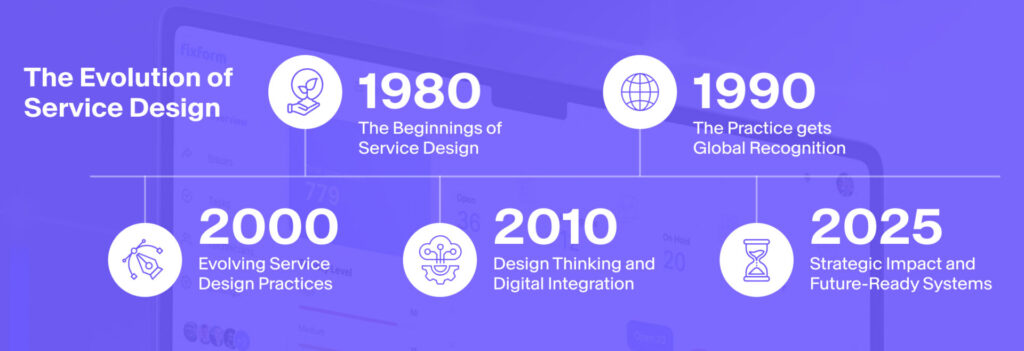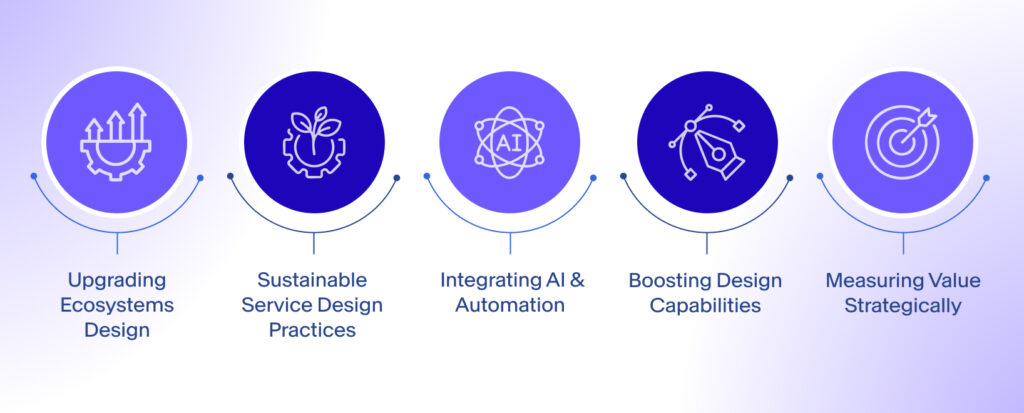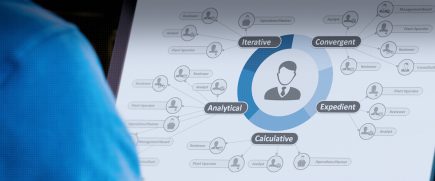Service Design, as a specialized product design practice, has come a long way since its humble beginnings in the early 1980s. Originally envisioned as a way to improve just the backend operations, it has grown into a holistic, strategic design discipline that shapes service ecosystems, impacts the global scenario, and helps create, deliver superior customer experiences.
Stuti Mazumdar - July 2025

The 1980s: The Beginnings of Service Design
In the early 1980s, Lynn Shostack introduced the concept of the service blueprint. This kickstarted the transformation of how organizations approached managing and designing services. This visual tool allowed designers and managers to map both visible interactions and unseen backstage processes, identifying bottlenecks and fail-points across the entire process with clarity. Blueprinting demonstrated that service delivery could be scientifically designed, at all times, across all industries.
The 1990s: The Practice Gets Global Recognition
In 1991, the Köln International School of Design (KISD) became one of the first institutions to formally provide service design education. KISD structured design as an interdisciplinary practice that integrates design principles with the fields of business, psychology, engineering, and the arts. Through real-world projects that impact both public and private sectors, students learned to blend service context, stakeholder interests, and system logic into product designs.
KISD taught designers to see beyond isolated interfaces and touchpoints. It helped them view services as continually evolving ecosystems shaped by evolving technology and human behavior.
The 2000s: Evolving Service Design Practices
Over time, service design has expanded from mapping simple interactions to orchestrating complex ecosystems. Today’s service design processes consider not only customer-facing interfaces but also backend systems, policy-based rules and constraints shaping the experience, haptic feedback, and other things that together create a cohesive experience.
Interactions once viewed in isolation are now seen as part of an ongoing user journey, whether during a product purchase, service registration, or a healthcare procedure. This practice now includes principles from systems thinking, operations management, user research, and continuous iteration.
Service design’s structured approach helped it break into the public sector, where processes that impact the global audience directly, like transit planning, healthcare delivery, and civic services, were reimagined. Designers integrated empathetic design philosophy to complex systems, improving access and performance.
The 2010s: Design Thinking and Digital Integration
Service design absorbed frameworks from product design and design thinking, creating iterative workflows that prioritize user research, prototyping, and testing. This is part of what we now know to be the commonly used 5 steps of design thinking. Tools like journey maps, storyboards, and service blueprints became industry standards.
Importantly, digitization created new service dimensions. It embedded technology to enable industrialists to design with real-time personalization, AI assistance, and IoT. As a result, service experiences are becoming adaptive, safe, and context-aware.
Service Design in 2025 and Beyond

Looking ahead, the evolution of service design is promising with growing complexity and influence on real-world scenarios.
1. Upgrading Ecosystems Design
Rather than isolated projects, designers are building integrated systems—intertwined layers of digital, physical, and security infrastructures. This demands deeper fluency in systems design thinking, stakeholder management, and technological prowess.
2. Sustainable Service Design Practices
With climate crises and societal inequity amplifying with each passing day, designers must embed ethics and sustainability into all design practices. The future demands eco-conscious, inclusive services that balance business outcomes, socio-political needs, and environmental responsibility.
3. Integrating AI & Automation
AI-powered tools are becoming part of the frontline user experience. Users don’t just expect AI-based innovation, they demand it—from chatbots to dynamic journey assistants. Designers need to recalibrate interactions not just for users, but for bots that work together within a cohesive system and orchestrated workflows, ensuring trust, transparency, and user agency.
4. Boosting Design Capabilities
The demand for service-led innovation has boomed, especially in government, finance, and healthcare sectors globally. Organizations now rely on large service design teams working in parallel, aligned by shared toolkits, governance, and ecosystem vision to create effective, sustainable, and empathetic services that can be easily and swifty adapted to different industrial scenarios.
5. Measuring Value Strategically
Designers are slowly transitioning their feedback-seeking workflows from surveys to garnering qualitative inputs on impact-driven metrics that truly reflect the effect of improvements in efficiency, satisfaction, and usability. This establishes service design as a core strategic lever, not just a creative add-on.



